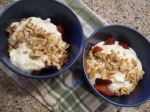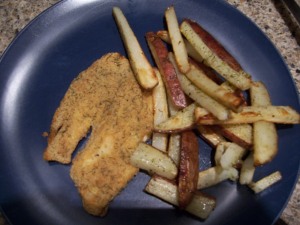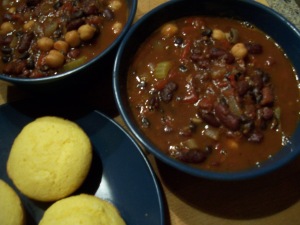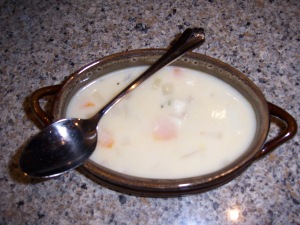 We were at Better Bulk (aka around our house as “The Bulky”) the other day and picked up some awesome Hewitt’s yogurt. We started buying their skim milk yogurt a couple of years ago when the two of us collectively lost 60 pounds on the “eat less move more” diet.
We were at Better Bulk (aka around our house as “The Bulky”) the other day and picked up some awesome Hewitt’s yogurt. We started buying their skim milk yogurt a couple of years ago when the two of us collectively lost 60 pounds on the “eat less move more” diet.
When we first started eating it, we would add honey. But we’ve found this and a few other organic yogurts are so creamy and delicious, they don’t really need a sweetener, just some fruit and other tasty additions.
 We start with about 1/2 a cup (125 ml) of sliced strawberries. They usually have some at Jerry’s, or Kelly’s, or Plank Road Market. Then we add 1/2 cup or 125 ml of the yogurt.
We start with about 1/2 a cup (125 ml) of sliced strawberries. They usually have some at Jerry’s, or Kelly’s, or Plank Road Market. Then we add 1/2 cup or 125 ml of the yogurt.
Top each serving with a sprinkling of cinnamon – it tricks your m outh into tasting “sweet”. Sprinkle with some sunflower or pumpkin seeds, or chopped nuts (a tablespoon or two – 15 to 30 ml – altogether). To round out your breakfast, have half a whole-wheat English muffin with some crunchy peanut butter. A delicious healthy way to start the day!
outh into tasting “sweet”. Sprinkle with some sunflower or pumpkin seeds, or chopped nuts (a tablespoon or two – 15 to 30 ml – altogether). To round out your breakfast, have half a whole-wheat English muffin with some crunchy peanut butter. A delicious healthy way to start the day!









